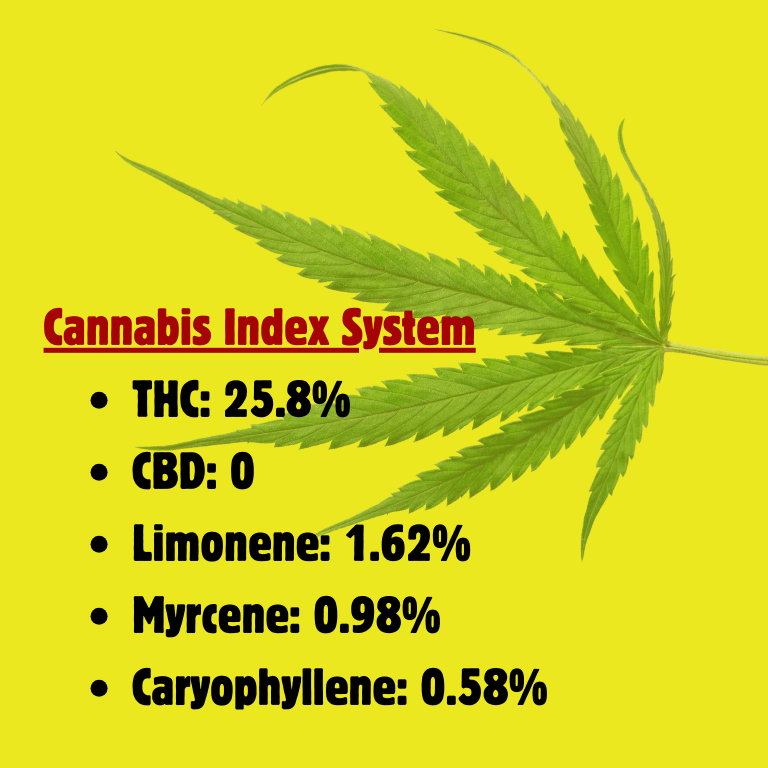Innovation in Cannabis: Introducing a New Index System

Revolutionizing Cannabis with a New Index System: Enhancing Risk Management and Consumer Clarity
As the cannabis industry continues to grow, the need for a sophisticated and reliable system to categorize and understand cannabis strains has become increasingly important. Traditional classifications of Indica and Sativa are no longer sufficient to capture the complexity and diversity of cannabis effects. A new index system that incorporates terpene profiles alongside cannabinoid content promises to revolutionize the industry, providing clearer guidance for both medical practitioners and consumers. This article explores the benefits and challenges of implementing such a system and its potential impact on risk management in the cannabis sector.
Understanding the New Index System
The proposed index system expands beyond the simple Indica and Sativa classification, incorporating detailed information about terpenes—the aromatic compounds in cannabis that significantly influence its effects. This system, which requires access to a Certificate of Analysis (COA), categorizes strains based on their terpene and cannabinoid content, offering a comprehensive code that conveys vital information quickly and accurately.
Example of the Index System
Consider the strain “Rockstar.” The COA for Rockstar shows the following profile:
- THC: 25.8%
- CBD: 0
- Limonene: 1.62%
- Myrcene: 0.98%
- Caryophyllene: 0.58%
Using the new index system, Rockstar’s strain code would be LMC70. This code indicates the dominant terpenes and their concentrations, as well as the THC level.
How to Index a Cannabis Strain
The index system uses specific codes for terpenes and assigns stars based on their concentrations:
Terpene Codes: Myrcene (M), Humulene (H), Nerolidol (R), Bisabolol (B), Limonene (L), Linalool (N), Terpinolene (T), Fenchol (F), Caryophyllene (C), Pinene (P), Ocimene (O).
Terpene Percentage:
- 0.01 – 0.49%: No star
- 0.50-0.99%: *
- 1 – 1.99%: **
- 2-3%: ***
THC Levels:
- 1 = 0.01–0.9%
- 2 = 1–4.9%
- 3 = 5–9.9%
- 4 = 10–14.9%
- 5 = 15–19.9%
- 6 = 20–24.9%
- 7 = 25–29.9%
- 8 = 30–35%
- 9 = 35%+
CBD Levels:
- 0 = 0.0%
- 1 = 0.01–0.9%
- 2 = 1–4.9%
- 3 = 5–9.9%
- 4 = 10–14.9%
- 5 = 15–19.9%
- 6 = 20–24.9%
- 7 = 25–29.9%
- 8 = 30–35%
Advantages of the New Index System
Enhanced Consumer Information
The system provides consumers with precise information about the strains they are using, aiding in selecting the appropriate product for their needs. For instance, a patient seeking relief from anxiety might choose a strain high in Myrcene (M) and Limonene (L), known for their calming effects.
Streamlined Recommendations
Medical practitioners can use the index to recommend alternatives more efficiently. For example, if a particular strain is unavailable, they can find another with a similar profile. Cannatrek’s Topaz strain (C*HL70) could be substituted with The Soap (C**HL60), offering a similar therapeutic effect.
Challenges and Limitations
Exclusion of Minor Terpenes
The system currently only highlights the three dominant terpenes, potentially overlooking minor terpenes that also contribute to the entourage effect. This limitation may reduce the comprehensiveness of the profile.
Ratio and Interaction Effects
The index does not account for the ratios between terpenes and cannabinoids, which could affect the overall impact. Understanding these ratios is crucial for optimizing therapeutic outcomes.
Missing Compounds
Important compounds like flavonoids, alkaloids, and sugars are not included in the COA. These secondary compounds can influence the plant’s effects and should be considered for a more holistic understanding.
Implementing the Index System
For successful implementation, the following steps are essential:
Comprehensive Data Collection
Collect detailed data from COAs, including all relevant terpenes and cannabinoids.
Standardization and Training
Develop standardized protocols for COA interpretation and provide training to dispensary staff and medical practitioners.
Consumer Education
Educate consumers about the new system, ensuring they understand how to use the information to make informed choices.
The introduction of a new index system for cannabis strains represents a significant advancement in the industry’s approach to risk management and consumer transparency. By providing detailed profiles based on terpene and cannabinoid content, the system enhances the ability of consumers and medical practitioners to make informed decisions. While there are challenges to address, the potential benefits in terms of improved patient outcomes and industry standards are substantial. As the cannabis industry continues to evolve, innovative tools like this index system will be crucial in navigating its complex landscape.











